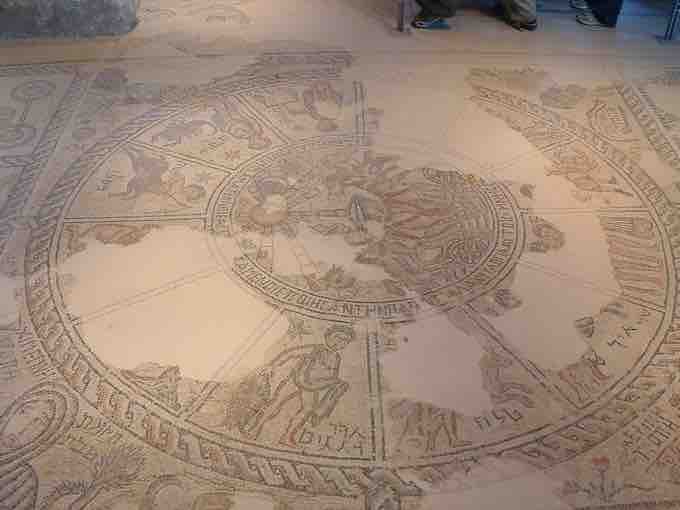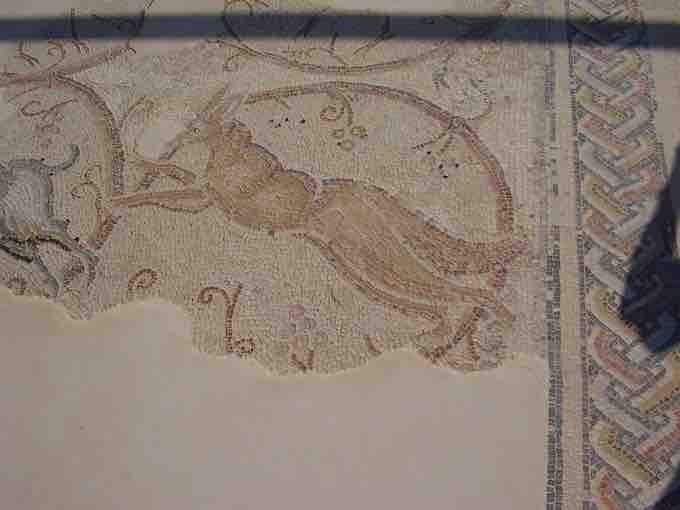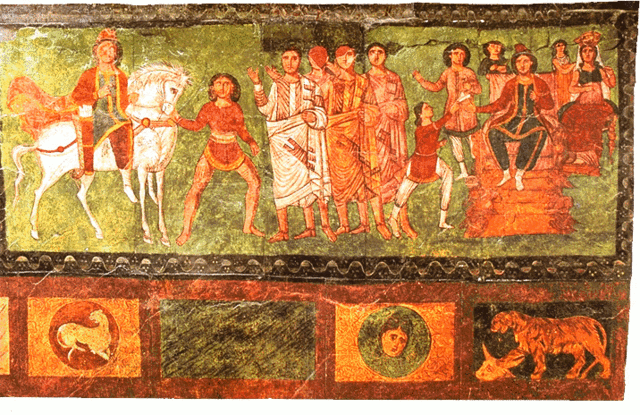The Second Commandment and Its Interpretations
The Second Commandment, as noted in the Old Testament, warns all followers of the Hebrew god Yahweh, "Thou shalt not make unto thee any graven image." As most Rabbinical authorities interpreted this commandment as the prohibition of visual art, Jewish artists were relatively rare until they lived in assimilated European communities beginning in the late eighteenth century. Although no single biblical passage contains a complete definition of idolatry, the subject is addressed in numerous passages, so that idolatry may be summarized as the worship of idols or images; the worship of polytheistic gods by use of idols or images; the worship of trees, rocks, animals, astronomical bodies, or another human being; and the use of idols in the worship of God.
In Judaism, God chooses to reveal his identity, not as an idol or image, but by his words, by his actions in history, and by his working in and through humankind. By the time the Talmud was written, the acceptance or rejection of idolatry was a litmus test for Jewish identity. An entire tractate, the Avodah Zarah ("strange worship") details practical guidelines for interacting with surrounding peoples so as to avoid practicing or even indirectly supporting such worship.
Attitudes towards the interpretation of the Second Commandment changed through the centuries. Jewish sacred art is recorded in the Tanakh and extends throughout Jewish Antiquity and the Middle Ages. The Tabernacle and the two Temples in Jerusalem form the first known examples of "Jewish art." While first-century rabbis in Judea objected violently to the depiction of human figures and placement of statues in temples, third-century Babylonian Jews had different views. While no figural art from first-century Roman Judea exists, the art on the Dura-Europos synagogue walls developed with no objection from the rabbis.
Illuminated Manuscripts and Mosaics
The Jewish tradition of illuminated manuscripts during Late Antiquity can be deduced from borrowings in Early Medieval Christian art. Middle Age Rabbinical and Kabbalistic literature also contain textual and graphic art, most famously the illuminated haggadahs like the Sarajevo Haggadah, and manuscripts like the Nuremberg Mahzor. Some of these were illustrated by Jewish artists and some by Christians. Equally some Jewish artists and craftsmen in various media worked on Christian commissions.
Byzantine synagogues also frequently featured elaborate mosaic floor tiles. The remains of a sixth-century synagogue were uncovered in Sepphoris, an important center of Jewish culture between the third and seventh centuries. The mosaic reflects an interesting fusion of Jewish and pagan beliefs. In the center of the floor the zodiac wheel was depicted. The sun god Helios sits in the middle in his chariot, and each zodiac is matched with a Jewish month. Along the sides of the mosaic are strips depicting the binding of Isaac and other Biblical scenes.

Mosaic floor at Sepphoris synagogue, Israel
This fifth-century mosaic is a depiction of the Zodiac Wheel.
The floor of the Beth Alpha synagogue, built during the reign of Justinian I (518-527), also featured elaborate nave mosaics. Each of its three panels depicts a different scene: the Holy Ark, the zodiac and the story Isaac's sacrifice. Once again, Helios stands in the center of the zodiac. The four women in the corners of the mosaic represent the four seasons.

Beth Alpha Mosaic
The Byzantine synagogue at Beth Alpha features elaborate nave mosaics.
As interpretations of the Second Commandment liberalized, any perceived ban on figurative depiction was not taken so seriously by Jews living in Byzantine Gaza. In 1966, remains of a synagogue were found in the region's ancient harbor area. Its mosaic floor depicts a syncretic image of King David as Orpheus, identified by his name in Hebrew letters. Near him are lion cubs, a giraffe and a snake listening to him playing a lyre. A further portion of the floor was divided by medallions formed by vine leaves, each of which contains an animal: a lioness suckling her cub, a giraffe, peacocks, panthers, bears, a zebra, and so on. The floor was completed between 508 and 509.

Gaza Synagogue Mosaic
This mosaic from the ancient synagogue at Gaza is an unusual example of figurative depiction in early Jewish art.
Dura-Europos
Dura-Europos, a border city between the Romans and the Parthians, was the site of an early Jewish synagogue dated by an Aramaic inscription to 244 CE. Also the site of Christian churches and mithraea, this city's location between empires made it an optimal spot for cultural and religious diversity.
The synagogue is the best preserved of the many imperial Roman-era synagogues that have been uncovered by archaeologists. It contains a forecourt and house of assembly with frescoed walls depicting people and animals, as well as a Torah shrine in the western wall facing Jerusalem. The synagogue paintings, the earliest continuous surviving biblical narrative cycle, are conserved at Damascus, together with the complete Roman horse-armor. Because of the paintings adorning the walls, the synagogue was at first mistaken for a Greek temple. The synagogue was preserved, ironically, when it was filled with earth to strengthen the city's fortifications against a Sassanian assault in 256 CE.
Remains of Synagogue at Dura-Europos
This is the best preserved ancient synagogue to be uncovered by archaeologists.
The preserved frescoes include scenes such as the Sacrifice of Isaac, and other Genesis stories, Moses receiving the Tablets of the Law, Moses leading the Hebrews out of Egypt, scenes from the Book of Esther, and many others. The Hand of God motif is used to represent divine intervention or approval in several paintings. Scholars cannot agree on the subjects of some scenes, because of damage, or the lack of comparative examples.

Fresco depicting a scene from the Book of Esther
Synagogue at Dura-Europos. c. 244 CE.
Scholars think the paintings were used as an instructional display to educate and teach the history and laws of the religion. Some think that this synagogue was painted in order to compete with the many other religions practiced in Dura-Europos. The new (and considerably smaller) Christian church (Dura-Europos church) appears to have opened shortly before the surviving paintings were begun in the synagogue. The discovery of the synagogue helps to dispel narrow interpretations of Judaism's historical prohibition of visual images.